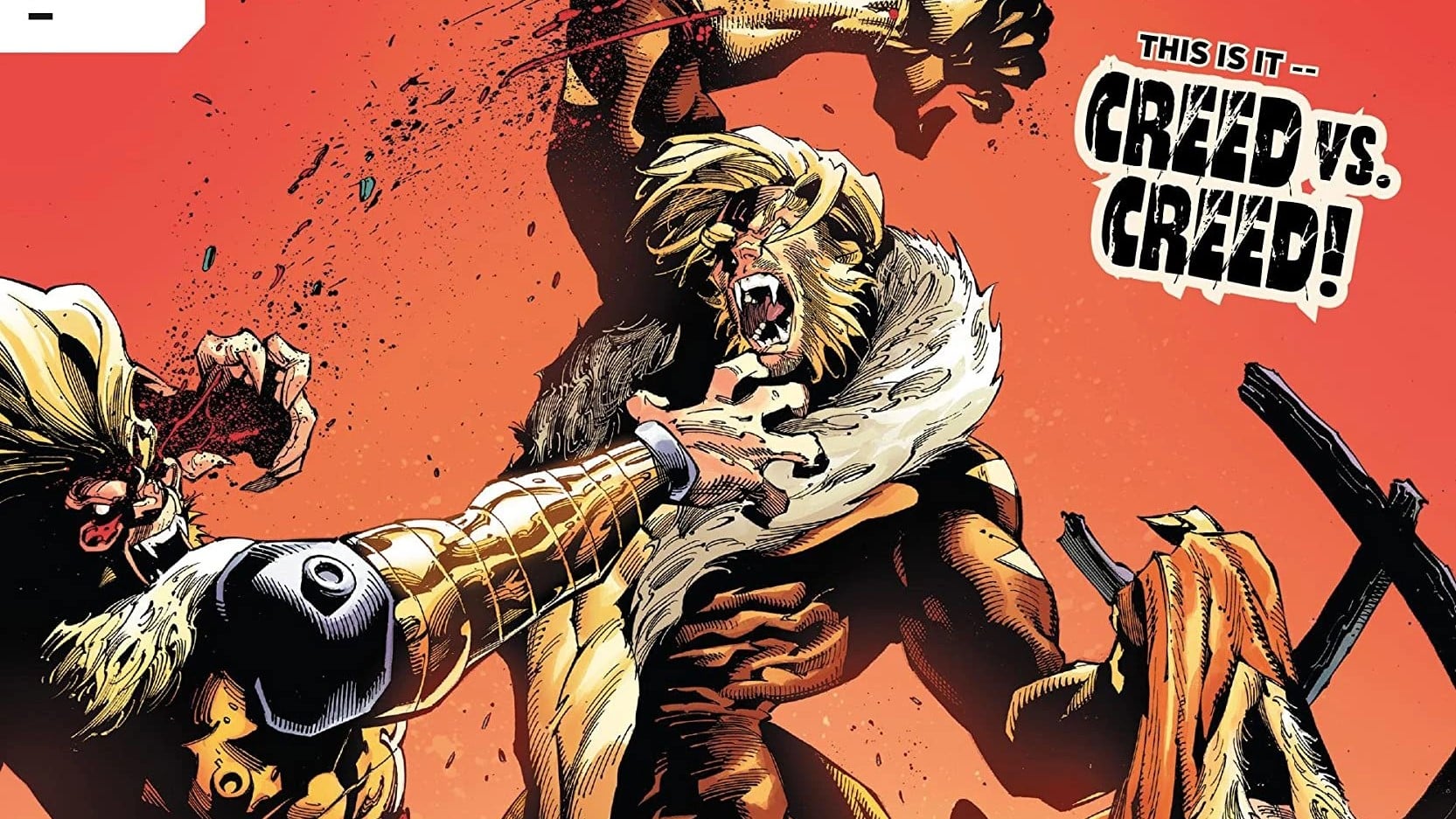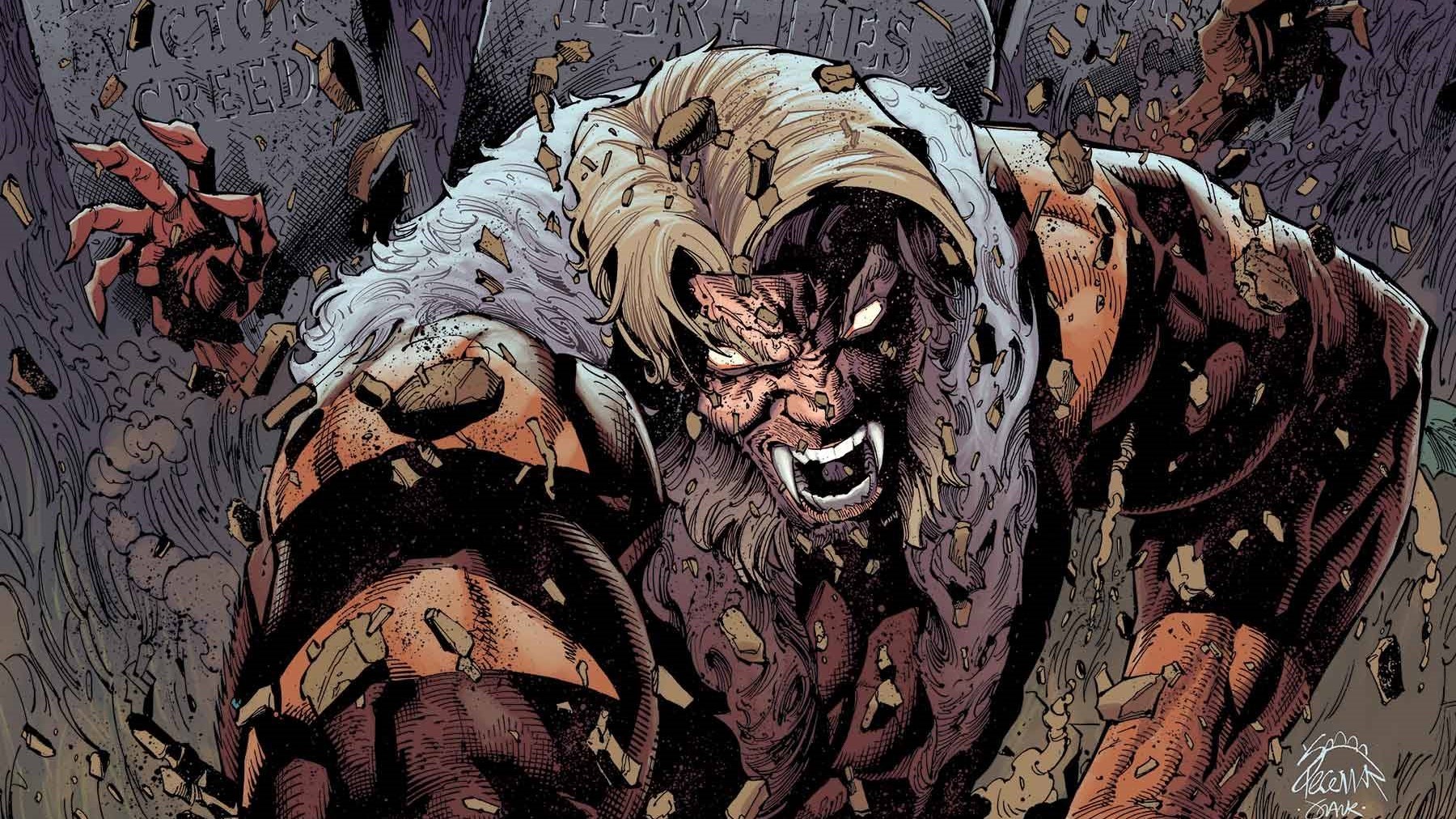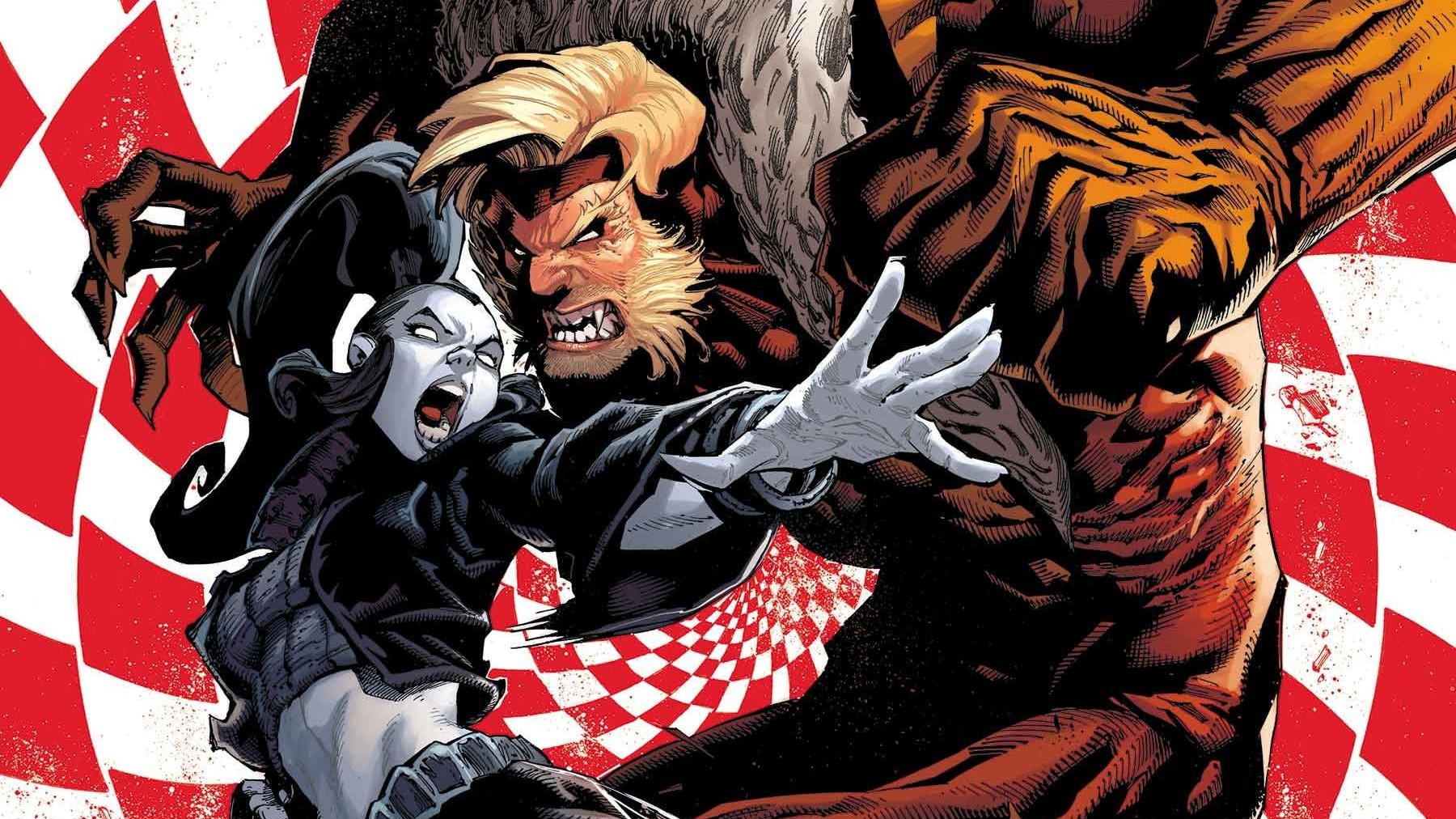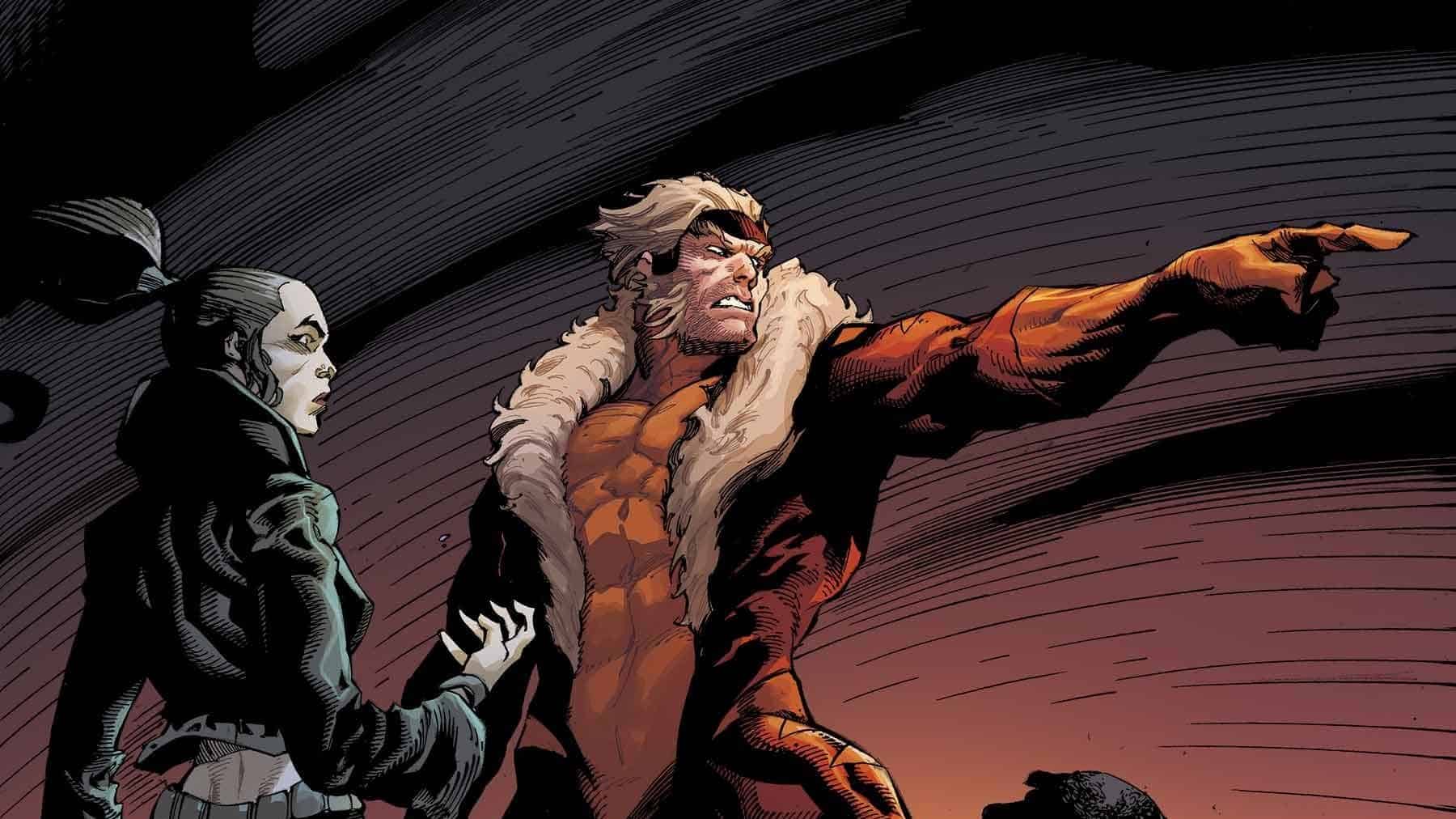For breaking the laws of Krakoa, Sabretooth was dragged into the Pit, sentenced to an eternity of torment. But no prison can hold him – or can it? A sentient island staffed by mutants has many kinds of walls. Sabretooth #1 is a gory journey into the carceral state of Krakoa written by Victor LaValle, drawn by Leonard Kirkman, colored by Rain Beredo, and lettered by VC’s Cory Petit.
Jude Jones: My former student is in jail. They’ve been in jail since they were 17 years old for an alleged crime that ranks among the most heinous one can commit.
Yet the alleged crime that sent that student, who in any other context would still be considered a child, to a jail full of adults, sentenced as an adult, forced to defend themselves among adults in a place they will almost certainly spend the rest of their adult life…the thing about that (alleged) crime is, well…
That crime is not always considered a crime.
Sometimes they say it’s justified. Sometimes those who, like my student, would be considered criminal, are celebrated as heroes, cheered on by crowds, given time to sit with former presidents, given complete absolution on interviews.
My student is in prison. I haven’t seen them since I was in the courthouse with their younger sibling by happenstance, supporting that younger sibling with their own, different legal matter, watching helplessly, angrily, sadly, as both walked through the courthouse in chains.
We’re taught to believe prison is a logical end result of justice – that the people who did bad have to go there. “Do the crime, do the time.” If I accept that, then what are they supposed to do while they’re doing the time? What, exactly, is the point of imprisonment?
Is it for rehabilitation? For penance and a means of emotional, if not spiritual retribution?
Or is it for something more sinister, more visceral, more centered in vengeance and power projection than simple “justice?”
My student is in prison where they will spend the rest of their natural life, left to grow, through concrete cracks and crevices, towards whatever sunlight those cracks allow.
My student may not deserve your pity or your care; they, I’m sure, deserve something stringent.
I just don’t know if they deserve this. Not in this country.
And I’m not so sure Sabretooth does in his country either.
I owe the reader a truth: I (in my personal opinion, totally separate from any organizations I may have, currently, or in the future work or write for) am not objective when it comes to our carceral system. I dislike it. I hate it. The criminal “justice” system in America is inexorably connected to America’s original sin; thus the consequence of that system (incarceration) is inexorably connected to that sin as well.
I see the vestiges of that sin in the system that imprisons our main character, Victor Creed. Creed, to be very clear, is not a victim; not a Black or Brown person caught in a web of racism. His actions, no matter the ethical prism they’re filtered through, surely require consequences.
But why must he face consequences while others walk free? And what are the consequences, to man and mutant society, of the consequence this “criminal” faces?
My opinions will color my appreciation of this work, so while you may not agree (understandably), I hope you keep an open ear and heart.
(This is also why I declined to write about Legion of X, the sequel to the Way of X series Anna and I covered together – the pitch felt too much like copaganda, and I had little appetite to find out if my feelings were well-founded.)
Anna Peppard: Sometimes, Krakoa has seemed like an aspirational place, equipped to combat injustice and prejudice with bold new ways of living and being. Other times, it’s felt quite the opposite. (Does Stacy X still have to distribute contraception on the DL out of her purse? I’ll stop asking when we get a clear answer.)
Yet Krakoa remains suffused with storytelling possibilities. When written well, supervillains are similar. A good supervillain isn’t just an inversion of their superheroic nemesis. A good supervillain defies presumptions of order and simplistic notions of right and wrong. A good supervillain attacks social mores and challenges their virtues. A good supervillain sinks their teeth into the jugular of a superhero then tosses them aside like a sack of wet meat and makes us think about what that means. Here, Sabretooth is a very good supervillain doing very bad things in a very good comic. Let’s talk about why.
Jude: The mission was clear. Three mutants, Sabretooth, Mystique (his child’s mother, remember that?), and Toad were sent into Damage Control to retrieve information on what we’d later find out to be The Orchis Forge, the tactile awakening of humanity’s mutant eradicating dreams. The mission was messy, in no small part due to Sabretooth’s wanton bloodlust (or at least that’s what we assume – we caught the action in media res, so we don’t actually *know* if Sabretooth’s bloodlust was warranted). Two mutants escaped, plans in hand, to Krakoa. One was caught by a force field, tried by humans, and eventually freed due to “diplomacy.”
That one was Sabretooth, and we meet him in front of the ruling council of the country he just defended; their possible salvation gleaned from the slash of Sabretooth’s claws.
X-Force, let’s remember, faces no consequences for the same actions – for GROSSER actions – than Victor Creed committed. X-Force was formed to commit gross actions.
Yet whose actions were criminalized?
How many times have mutants – those acceptable, convenient mutants – bent rules out of convenience?
Creed’s inconvenience was his crime.
Thus we begin our journey, our protagonist passionately aggrieved, ready to exact vengeance on all who’ve wronged him.
Bench’n ten quarters, so I’m hard to sweat
Used a tat gun, and engraved my set
I live in the hole, so the floor’s my bed
Jude: What does jail do? Does it heal? Rehabilitate? I’m sure for some it has; I’m sure hypothetically it can. But that’s not the investment. The purpose. Remember, jail is not for justice; jail is for vengeance. And as the state – or those who run the state – exact vengeance, those incarcerated, those robbed of humanity and pity, have to adapt.
And adapt Creed does. He vividly, graphically, fanatically, imagines a vengeance fantasy rooted in his escape. Cyclops is maimed; X-Men are burnt; Nightcrawler’s hand impaled around Creed’s still-beating, bleeding heart.
Creed takes out his heart. What need does he have for it, after all?
Leonard Kirk’s work here is exactly what it needs to be – detailed and graphic, impassioned and, when necessary, pensive. His art is the necessary accompaniment to LaValle’s tale, as we need to see – to feel – exactly what Creed desires.
And what he desires is blood.
Anna: Totally with you on Kirk’s embrace of gore (it’s a Sabretooth book, after all) broken up with well-placed moments of quiet reflection. At its best, superhero comic book violence is deeply symbolic, staging interpersonal and cultural conflicts in graphic form. The scene where Sabretooth imagines himself killing Nightcrawler is a perfect example.
In light of some of Nightcrawler’s behavior in Way of X, I found a certain catharsis in this sequence. That feeling when Kurt Wagner does his best to tear your heart out? Relatable! But I was also struck by the symbolism of the wordless, borderless panel where Victor contemplates the sight of his own bloody, still-beating heart, cradled in Kurt’s severed three-fingered hand, still wearing its white glove. Historically, Kurt’s been the soul of the X-Men. One of my favorite modern representations of this theme is from X-Men: Red #1 (2018), in a sequence where Kurt reaches out to a persecuted young mutant while saying, “Take my hand.” To accept Kurt’s hand is to accept the boundless acceptance he embodies, which might be scary but is really darn beautiful, too.
In the present comic, Kurt using his powers in a way he’s never done before to try and kill Sabretooth is out of character. But it’s not out of character within the context of Sabretooth’s own understanding of his relationship to what Nightcrawler represents. Victor knows he’s the one person the soul of the X-Men will never accept. Whether that’s true or not doesn’t matter. It’s what Victor believes when he takes Kurt’s hand – out of his chest, then stares at Kurt’s dead fingers curled around his own dying heart. This is superhero comic book poetry at its finest.
It’s also worth noting that when Sabretooth was magically transformed into a good guy during the AXIS event back in 2014, a version of Nightcrawler who was transformed into a bad guy did, in fact, try to kill Victor, stabbing him with many swords. After AXIS, Sabretooth had a tentative redemption arc, which lends a note of tragedy to his exile and perhaps added resonance to this latest fight with Nightcrawler, symbolizing how the illusion of change can be particularly hard on characters who are perceived to be – or perceive themselves to be – irredeemable.
I’m kind of schizophrenic, I’m in this shit to win it
‘Cause life’s a Wheel of, Fortune here’s my chance to spin it
Jude: On whose behalf does Doug operate? What motivates his actions? Is it kindness? We know from X-Men Green he (and Krakoa) aren’t particularly fond of the Pit. Is his offer to give Creed his memory a trick? Doug openly, directly, says he represents the state, yet he seems to operate in opposition to Xavier’s (the literal, hypocritical embodiment of the state) wishes, if not knowledge. Is this even real or just Sabretooth’s survival metastasizing?
And this agreement – we know Creed gains memory, but what’s not made clear is what Creed gave to get his gain. The (wonderfully written) data pages betray something that may not be clear to persons whose understanding of Creed comes from a cartoon or a (meh) movie: Sabretooth is intelligent. Thoughtful. Belligerent, yes, but hyper, hyper-aware.
Agreements always work two ways and Creed, who is as savvy a negotiator as anyone, knows this well.
What did he give up to remember? What was the cost?
Anna: Doug’s line about how he “didn’t get a vote” regarding Sabretooth’s imprisonment is a graceful way to note the increasingly obvious divisions within the Council, between the Council and the people of Krakoa, and, potentially, between the mutants and the island itself. It can also be read as a dig at the fact Krakoa isn’t a democracy and never has been. (Though of course – that’s true of many real-life societies that purport to be democracies.)
Though incarcerated your mind dies
Jude: Creed’s depraved mind, now fully unleashed towards vengeance and survival, is not dying: It’s thriving. In what may be the most affecting panel in the whole work Creed, perched on a cliff, after having indulged himself in a cacophony of pornographic violence, ponders his next steps. In another work, in a weaker work, this is where Creed’s guilty conscience would appear; where he would wonder if his carnage had a purpose; if the carnage was worth it.
This is not a weak work.
LaValle creates an internal monologue for Creed – a Feral Council – composed of a well-dressed captain (the thinker), a boy (the embodiment of reckless, thoughtless joy), and the beast (the savage, suited in Creed’s Sabretooth uniform.) Rather than seeing three different personalities in opposition, we (and a mysterious cat – maybe Doug in disguise?) see three sides of the same spirit.
The three decide, in unison, to up the ante on the violence. Reflection has only made Creed a more resolute, more determined, more imaginative killer.
Anna: Representing different aspects of a character by depicting them as multiple characters is hardly a new technique. But it works well here, both within the narrative and in a metatextual sense. Sabretooth is a wildly inconsistent character; while his bloodlust is pretty constant, his motivations and basic facts of his backstory vary depending on what any given story needs him to be. Writers resort to “it was just a clone” shenanigans whenever they want to kill Sabretooth or resurrect him or retell his feud with Wolverine from yet another angle. The reframing of this inconsistency as internal conflict is generic but effective.
Jude: Completely agreed, Anna.
Sabretooth, as bad as he was, as bad as he is, was never the worst of the “bad” mutants. Not by body count or any other means of measurement, compared to Nazis and genocidal murders (pick one!) and capitalists. But here, in a floral temporal vortex, where time moves asymmetrically, akin to The Vault or The World, his appetite and imagination for depravity grow unabashed, unvarnished. Thus, we see the ambitions of Creed, ambitions that, up to now, have been relatively pedestrian, extend to a Conan-like fantasy (with a sword and all!) and ambitions of overtaking the galaxy. Creed has always been intelligent, yes, but we’ve never seen him use his intellect in accordance with his imagination.
He came in bad. He will exit (and make no mistake, he will exit) worse.
In his interview with AIPT, LaValle pointed to books like Blood in my Eye and Down These Mean Streets as inspiration. These stories are, to varying degrees, about how environments enable their inhabitants’ worst inhibitions. Prison and the Pit then, clearly ineffective in many ways, are grossly effective in one:
They create better criminals.
The Quiet Council, in demonizing Creed, created a literal devil (sporting horns and all) who’s decided it’s enjoyable to rule in the hell of his own making.
And as his apparitions begin to appear across the land, the final truth of this tale – and of incarceration – appear: what man has tried to hide in the dark, behind bars, will always, always, come out to light.
Anna: Regarding the contract that grants Victor mental freedom while continuing to deny his physical freedom – I found myself thinking of a depressingly relevant passage from Richard Wright’s 1945 memoir Black Boy, about being condemned for “dreaming the dreams the state says are wrong.” In Black Boy, this refers to the ways Jim Crow laws (and institutionalized racism in general) imprison minds as well as bodies. Obviously, Victor Creed is very much a white dude, and it’s dangerous to assume he’s merely a victim of circumstance; where Wright dreamed of justice, Creed dreams of murder.
Yet I do find it interesting how limited Victor’s imagination is regarding, in his own words from that pensive moment on the cliff, “what else [he] could be.” All the dreams he has for himself in the Pit, even his superheroic one, in which he becomes the leader of the Starjammers, involve mass murder. But who – or what – is responsible for this limited imagination?
There’s a particularly pointed critique on the Starjammers splash page, when Victor talks about his brightly colored team of misfits destroying civilizations throughout the galaxy, then notes, “Basically, they were the C.I.A. but in outer space.” Sabretooth has been unjustly imprisoned – for eternity – in a hole in the ground with only his own dark fantasies for company, a fate he was sentenced to by an unelected ruling council that, as Jude notes, is not shy about wanting a scapegoat. Is it any wonder he can’t imagine anything better than visceral revenge and imperial conquest? It’s probably hitting the nail a little too hard on the head to say Sabretooth is just mimicking the supposed good guys but – he’s kinda mimicking the supposed good guys (the Quiet Council, the C.I.A.).
Jude: The issue ends with five new mutants (but not New Mutants) falling into the pit: notably, I would dare say intentionally, three are Black. One wonders if these characters deserve to be there.
Art imitates life, indeed.
No matter the thoughts, intentions, or circumstances, no one leaves the belly of the beast unscathed.
What does scathing look like?
We’ll have to wait until next month to see.
Anna: Many of us assumed we’d see Toad, Nanny, and Orphan-Maker in the Pit with Sabretooth. Instead, we get Nekra, Madison Jeffries (aka Box), Oya, Melter, and a new character named Third Eye.
The character I’m most surprised to see here is Nekra. I’m familiar with her from a bunch of 70s comics (mostly Daredevil, where she debuted, and Spider-Woman), but if this is your first time encountering her, be warned: her origin story is a doozy. Nekra is the daughter of an African American cleaning woman and a white nuclear scientist who was rejected by her mother and the Black community because she was born with chalk-white skin. She later discovered the mutant power to feed off hate, both her own and that of others; enough hate gives her super-strength and invulnerability. Nekra’s story might have been hamfisted commentary on the dangers of prejudice, but the intent doesn’t matter; it’s deeply offensive, reeking of paranoid fantasies about race-mixing and reverse racism. And it gets even worse when you add Nekra’s longtime partner the Mandrill to the mix.
Jude: I wasn’t familiar with Nekra and I was literally aghast at the blunt force racist way she was written. My God.
Anna: But LaValle excels at excavating the racism underpinning popular mythology. If I was going to trust anyone to do something interesting with Nekra, it would be LaValle.
The other character I’m particularly intrigued by is Oya, aka Idie Okonkwo, who is introduced alongside a caption, spoken by Sabretooth, about how the Pit “isn’t what you deserved.” I’m quite certain this line is correct – that Idie doesn’t deserve to be in the Pit. And yet, Idie may not think she deserves better. A central feature of Idie’s story is her belief, informed by her Catholic faith, that her mutant-ness and the violence that mutant-ness has wrought make her a monster, incapable of being saved. In this context, with this character – LaValle has plenty to work with.
Jude: This comic was good. Great. I would go so far as to say it may be necessary reading.
I just wish, for my sake, and my student’s sake, and society’s sake, it wasn’t.
Anna: I wanted to review this comic because I was hoping for a meaty meditation on justice in this not-especially-democratic and sometimes-pretty-dystopian utopia. After this issue – I look forward to digging deeper, while sharing Jude’s wish that it was just a fanciful story.
X-Traneous Thoughts:
- Sabretooth calling Mystique “Leni” is a reference to the long and complicated history between these characters. You can Google it. Or don’t. It’s fine.
- That Warlock briefcase is some good shit.
- I’m glad, so glad, to see so little Wolverine.
- On the flip side, I’m happy to see more of Rhapsody, thriving on Krakoa.
- The panel of the boy, face joyously spattered with red cake icing, is maybe the most disturbing image in the whole work – and that’s saying something in a comic that features more than one image of a skull getting flayed.
- We had a saying: the good apples don’t turn the bad apples good, but rotten apples absolutely turn good apples rotten. I’m praying for Oya’s soul.







